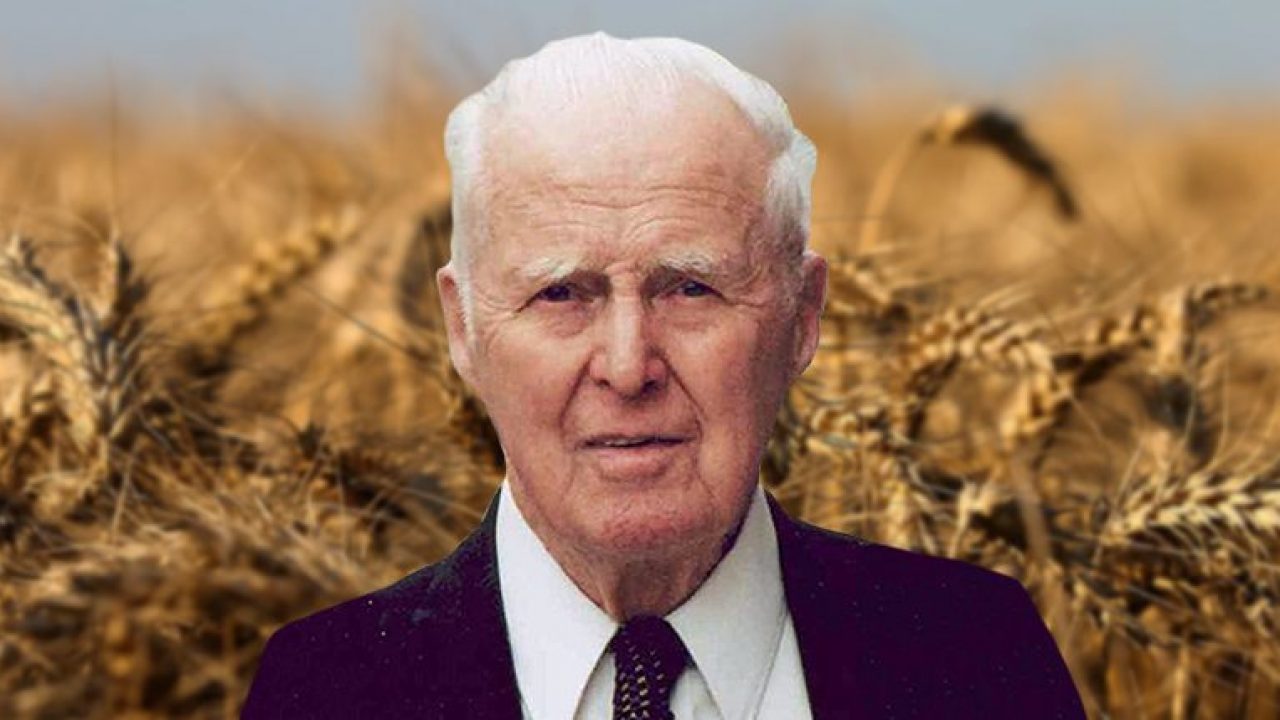Till the earth shall remain Green, the Life shall be seen.Food is the moral right of all who are born into this world.
For the life, the food is as essential as the water and oxygen are. Dr. Norman Ernest Borlaug who was born on March 25, 1914, an American agronomist led initiatives worldwide that contributed to the extensive increases in agricultural production termed the Green Revolution, Dr. Borlaug received his B.S. in forestry in 1937 and Ph.D. in plant pathology and genetics from the University of Minnesota in 1942.
Dr. Borlaug never think only for his country but for him, the life of every human being across the world was important for him and as such, he took up an agricultural research position in Mexico, where he developed semi-dwarf, high-yield, disease-resistant wheat varieties.
During the mid-20th century, Borlaug led the introduction of these high-yielding varieties combined with modern agricultural production techniques to Mexico, Pakistan, and India. As a result, Mexico became a net exporter of wheat by 1963. Between 1965 and 1970, wheat yields nearly doubled in Pakistan and India, greatly improving the food security in those nations. Later in his life, he helped apply these methods of increasing food production in Asia and Africa.
According to Jan Douglas, executive assistant to the president of the World Food Prize Foundation, “form of agriculture that Borlaug preaches may have prevented a billion deaths.”
He Increased disease resistance through multiline varieties and in 1953, Borlaug extended this technique by suggesting that several pure lines with different resistance genes should be developed through backcross methods using one recurrent parent. Dwarfing is an important agronomic quality for wheat; dwarf plants produce thick stems. The cultivars Borlaug worked with had tall, thin stalks. Taller wheat grasses better compete for sunlight, but tend to collapse under the weight of the extra grain—a trait called lodging—from the rapid growth spurts induced by nitrogen fertilizer Borlaug used in the poor soil.
Borlaug’s new semi-dwarf, disease-resistant varieties, called Pitic 62 and Penjamo 62, changed the potential yield of spring wheat dramatically.By 1963, 95% of Mexico’s wheat crops used the semi-dwarf varieties developed by Borlaug. That year, the harvest was six times larger than in 1944, the year Borlaug arrived in Mexico. Mexico had become fully self-sufficient in wheat production, and a net exporter of wheat.Four other high-yield varieties were also released, in 1964: Lerma Rojo 64, Siete Cerros, Sonora 64, and Super X.
In 1961 to 1962, Borlaug’s dwarf spring wheat strains were sent for multiplication testing in the International Wheat Rust Nursery, organized by the U.S. Department of Agriculture. In March 1962, a few of these strains were grown in the fields of the Indian Agricultural Research Institute in Pusa, New Delhi, India. In May 1962, M. S. Swaminathan, a member of IARI’s wheat program, requested of Dr. B. P. Pal, director of IARI, to arrange for the visit of Borlaug to India and to obtain a wide range of dwarf wheat seed possessing the Norin 10 dwarfing genes. The letter was forwarded to the Indian Ministry of Agriculture headed by Shri C. Subramaniam, which arranged with the Rockefeller Foundation for Borlaug’s visit. In March 1963, the Rockefeller Foundation and the Mexican government sent Borlaug and Dr. Robert Glenn Anderson to India to continue his work. He supplied 100 kg (220 lb) of seed from each of the four most promising strains and 630 promising selections in advanced generations to the IARI in October 1963, and test plots were subsequently planted at Delhi, Ludhiana, Pant Nagar, Kanpur, Pune and Indore. Anderson stayed as head of the Rockefeller Foundation Wheat Program in New Delhi until 1975.
During the mid-1960s, the Indian subcontinent was at war and experienced minor famine and starvation, which was limited partially by the U.S. shipping a fifth of its wheat production to India in 1966 & 1967.In 1965, as a response to food shortages, Borlaug imported 550 tons of seeds for the government.
In 1965, after extensive testing, Borlaug’s team, under Anderson, began its effort by importing about 450 tons of Lerma Rojo and Sonora 64 semi-dwarf seed varieties: 250 tons went to Pakistan and 200 to India. They encountered many obstacles. Their first shipment of wheat was held up in Mexican customs and so it could not be shipped from the port at Guaymas in time for proper planting.
The limited potential for land expansion for cultivation worried Borlaug, who, in March 2005, stated that, “we will have to double the world food supply by 2050.” With 85% of future growth in food production having to come from lands already in use, he recommends a multidisciplinary research focus to further increase yields, mainly through increased crop immunity to large-scale diseases, such as the rust fungus, which affects all cereals but rice. His dream was to “transfer rice immunity to cereals such as wheat, maize, sorghum and barley, and transfer bread-wheat proteins (gliadin and glutenin) to other cereals, especially rice and maize”.
Borlaug died of lymphoma at the age of 95, on September 12, 2009, in his Dallas home.
Borlaug’s children released a statement saying, “We would like his life to be a model for making a difference in the lives of others and to bring about efforts to end human misery for all mankind.”
For his contributions to the world food supply, Borlaug was awarded the Nobel Peace Prize in 1970 and so many other prestigious awards and honurs time to time.
The United Nations’ Food and Agriculture Organization (FAO) described Borlaug as “a towering scientist whose work rivals that of the 20th century’s other great scientific benefactors of humankind” and Kofi Annan, former Secretary-General of the United Nations said, “As we celebrate Dr. Borlaug’s long and remarkable life, we also celebrate the long and productive lives that his achievements have made possible for so many millions of people around the world… we will continue to be inspired by his enduring devotion to the poor, needy and vulnerable of our world.”
Undoubtedly, Dr. Borlaug was the father of Green Revolution in the world and he saved number of possible death from starvation. He always tried to reach at a state where the equilibrium may be maintained between the demand and supply of the food for all the world. Dr. Borlogue was a global personality who lived for the entire world and gave unbelievable contribution to the society. Though he was citizen of other country but he was careful for the people of all the countries of the world and made some of them self dependant to produce food for themselves and even to export it to fulfill the needs of others. India is one of such countries where he colored green and made it a part of Green Revolution.
Dr. Borlaug, India owes you along with the entire world. You were not less than a mother for all human being who always remains careful for her children.
We salute you.




